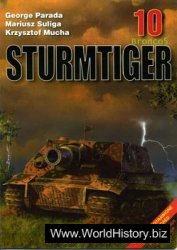Ordinary pedal bicycles had been used by all the armies in the First World War, and some were in use in the Second. But in the 1930s the German Army put many of its fighting soldiers on motorcycles. A whole battalion of a panzer division’s rifle brigade was given powerful motorcycles. Soldiers rode to battle and dismounted to fight, just as in an earlier century the dragoons had used horses.
In fact, the motorcycles were quite unsuited to modem war. Riders were vulnerable to small-arms fire and to man-traps, such as deliberately spilled oil. In Poland in September 1939 the weather had remained exceptionally fine, as it did for the May 1940 fighting too.
FIGURE 15 BMW R75 motorcycle with sidecar passing Sd. Kfz.231 armored car.

On soft ground or on bad roads the motorcycle became useless. During the summer of 1940 the German manufacturers BMW and Zundapp were both hurrying production of their massive 750 cc motorcycle combinations with engines that drove both the rear wheels of the bikes and the sidecar wheels too. Tests had shown that this radically improved the performance, but at the Volkswagen factory they were also hurrying. Professor Porsche was giving his 1936 car design a new look, changing the rear-axle reduction gear to improve traction and increasing the ground clearance to the army’s requirements. This light car, the military version of the “Beetle,” known as the Kiibel (bucket), became the only passenger car to remain in production for the German Army. The motorcycle, virtually useless in battle, was relegated to communications duties.




 World History
World History









